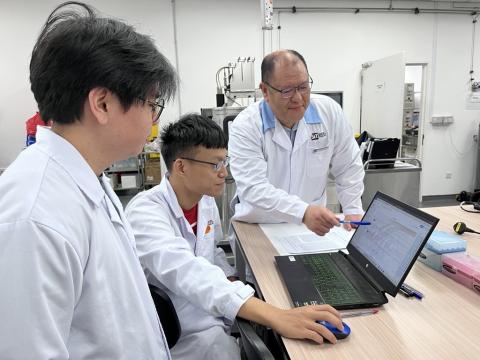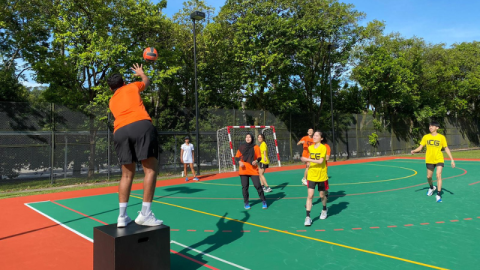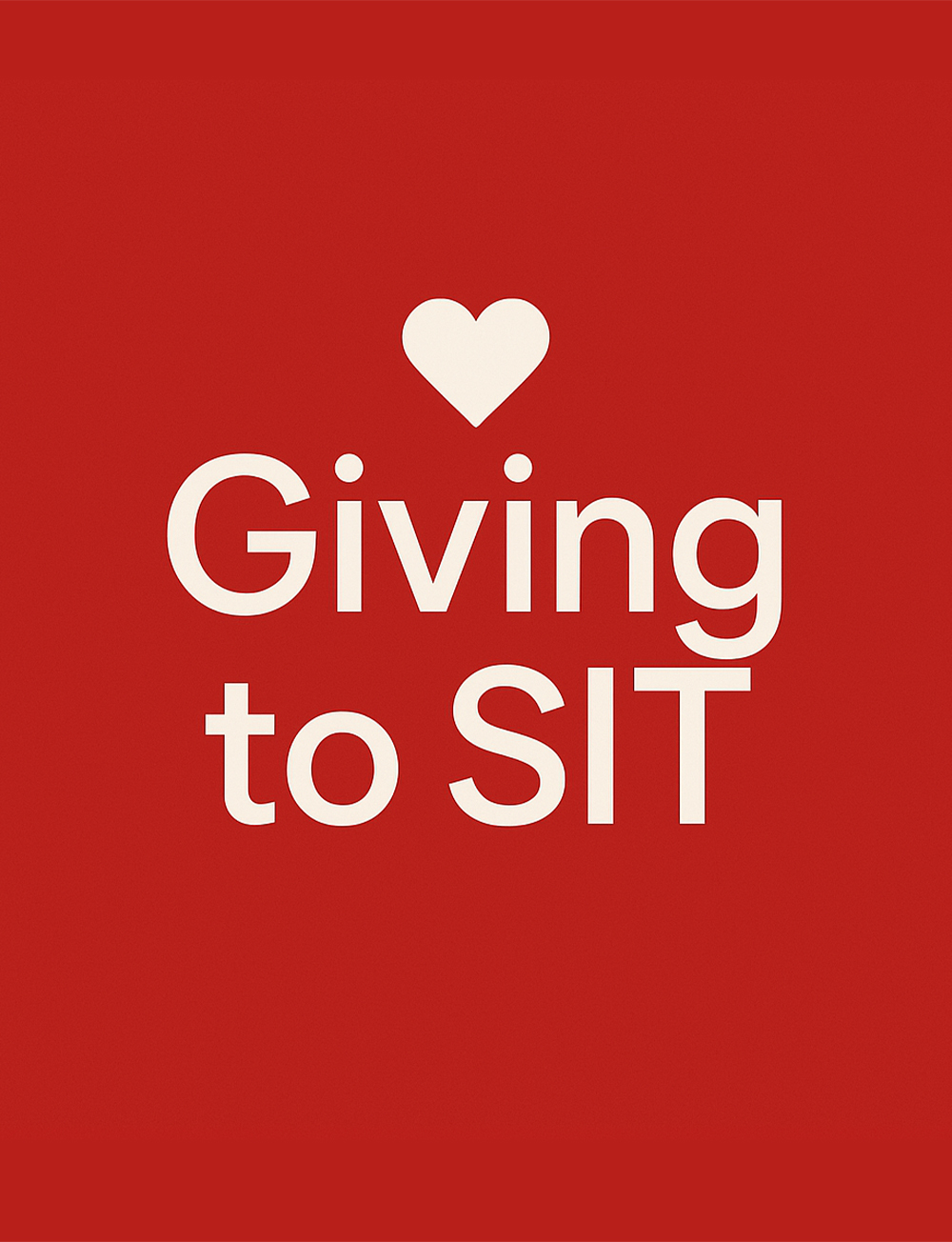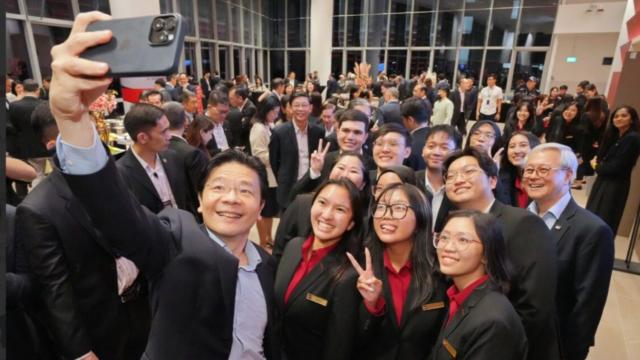The first autonomous university in Singapore to pioneer coaching with teaching, SIT has launched Coaching Students in Higher Education, a practical guide for educators.
What is coaching and how does it help empower students to perform at their best?
These were the questions that SIT faculty and coaching practitioners Associate Professor May Lim and her co-editors Assistant Professor Nadya Shaznay Patel and Senior Educational Developer Ramesh Shahdadpuri sought to answer in their newly launched book, Coaching Students in Higher Education.
Left to right: A/Prof Cheryl Lian, Dr Ong Chee Ming, Asst Prof Kyrin Liong, Mr Joe Chan, Ramesh Shahdadpuri , A/Prof May Lim, Asst Prof Nadya Shaznay Patel, Mr Kwok Boon Yong, Asst Prof Mara McAdams, Ms Zhang Weili (SIT Photo: Chew Kuan Hock)
Designed as a practical guide for educators, the authors consolidated research and case studies, as well as laid out compelling reasons and evidence why coaching should be an integral part of teaching and learning in tertiary institutions.
We spoke to A/Prof Lim to understand what coaching is about and how it benefits students and educators.
Coaching in the Academic Context
Coaching is not a new or foreign concept. It has largely been used for self-discovery and personal growth, mainly in the context of professional development. However, when applied to the tertiary environment, A/Prof Lim and her colleagues believe that coaching can have transformative and far-reaching effects in helping students develop qualities such as adaptability, resilience, and a lifelong learning mindset.
One key question that naturally arises is: What is the difference between coaching, mentoring and teaching?
A/Prof Lim explained, “Teaching involves the transfer of new knowledge to students, whereas in coaching, we empower students to problem-solve and discover the knowledge for themselves.”
When it comes to coaching versus mentoring, A/Prof Lim pointed out that coaching is about the educator asking the right kind of questions for students to discover their own solutions. Mentoring, on the other hand, entails the educator sharing their past experiences and providing advice.
Why Coaching Matters
Coaching takes a holistic approach and extends beyond classroom curriculum. It tackles conundrums that students may face across different settings during their educational journey. These may involve issues such as time management, overcoming inertia in learning, the challenges of working in a group, or even emotional management – all very much part and parcel of tertiary learning.
“These are not skills that can be taught in a lecture or tutorial, but through opportunities that we call ‘coachable moments’. But for coaching to work, that connection and bond with the student must already be there,” said A/Prof Lim. She added “As educators, we are in a privileged position to be part of students' lives, serving as trusted individuals they can learn from and develop holistically.”
Given its time- and labour-intensive nature, SIT educators take a solutions-focused approach to coaching, often allocating around 30 to 45 minutes to guide students to a practical, viable and sustainable outcome. But the results are well worth it.
A/Prof Lim shared, “When done right, coaching can produce work-ready graduates who are not just able to solve technical problems but are also adaptable team players who are able to bounce back after tough challenges.”
To verify its benefits, SIT has embarked on a two-year quantitative study with the Nanyang Polytechnic, funded by the Workforce Development Applied Research Fund to measure the effects of coaching on specific areas such as goal achievements, resilience and stress management in students.
Putting It All into a Book
Passionate about the benefits that coaching brings to students, A/Prof Lim and her colleagues started offering coaching and mentoring programmes as part of the SIT Teaching and Learning Academy (STLA) for their fellow academic staff so that they can better perform the role of Teacher-Coach-Mentor.
To encourage their programme participants to put it into practice, they consolidated coaching resources into Coach Academy, a digital platform of curated materials from leading academic researchers and industry practitioners who are well-established in the field.
Their efforts caught the attention of book publisher Routledge, who invited the team to put together a book to share their learnings with educators beyond SIT. Filled with authentic examples and handy tips, the book sought to help educators identify coachable moments in their daily encounters and interactions with students.
From left: Co-authors Asst Prof Patel, A/Prof Lim and Mr Shahdadpuri doing a book signing at the launch. (SIT Photo: Chew Kuan Hock)
“We wanted a resource that educators can use as a quick and easy reference when they encounter situations which can be turned into opportunities for coaching,” A/Prof Lim said.
“In it, we have compiled coaching questions that you can ask across different scenarios that we ourselves have encountered in our own coaching journey.”
What’s Next for SIT Coaching?
With the results of the research study slated to be out in 2025, A/Prof Lim and her colleagues will be in good stead to demonstrate the impact that coaching has on students, be it from coach-educators or external professional coaches.
SIT will also be rolling out a new 5-day professional development workshop in coaching. With its first run set in August 2025, the course will impart its coaching expertise to external educators and those in people development roles.
“When we equip more educators and trainers with the necessary skills to cultivate better 21st century competencies in their learners, we fulfill SIT’s mandate as a leader in applied learning and an institution that promotes lifelong learning at the same time,” A/Prof Lim asserted.















![[FA] SIT One SITizen Alumni Initiative_Web banner_1244px x 688px.jpg](/sites/default/files/2024-12/%5BFA%5D%20%20SIT%20One%20SITizen%20Alumni%20Initiative_Web%20banner_1244px%20x%20688px.jpg)


